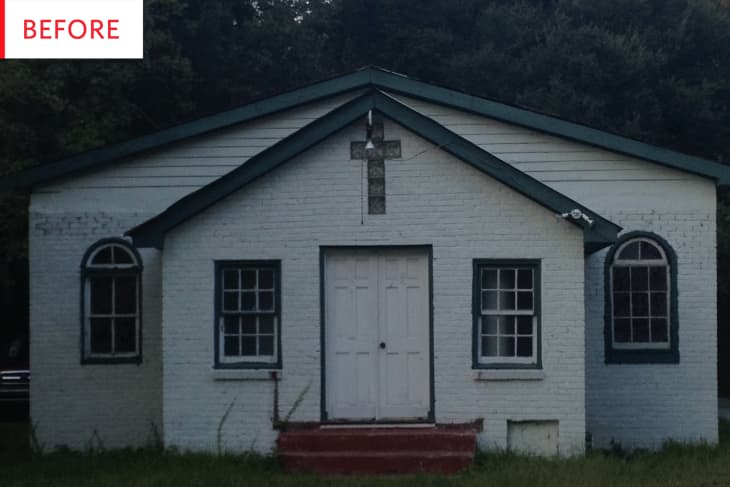Before and After: This Dilapidated Church Was Transformed into an Amazing, Modern Home

Hugh Molten, a South Carolina-based real estate agent, didn’t plan for such a big project when he bought this falling-down old church. “I originally had the vision to simply clean it out and live in it basically as-is; create a small shower in the corner, stainless prep tables for the kitchen and call it done.” Today, this 1600-square-foot former house of worship is an incredible industrial modern home, and how it ended up that way was a long and interesting journey.
The banks wanted the space to become more conventionally homey, and with a months-long journey to get the right permits in place, Hugh had plenty of time to research and plan the home of his dreams.
Over the months it took for the red tape to be sorted out, Hugh says he stayed up every night researching what he might want to do and how he could get it done.
With a total budget of $140,000 (for everything!), Hugh says he was forced to think outside of the box. While contractors did the heavy lifting and structural changes, Hugh did a lot of the work himself.
“It was basically my life for a year, working every day after work, every weekend. It was an amazing experience and I got to learn a lot.”
The church was—as you might expect—filled with pews when he purchased it. Hugh sold all of them except for two, which he restored and incorporated into his modern decor.
But the pews aren’t the only way he pays design homage to the structure’s original function. While waiting on permits, Hugh learned about the church’s importance in the neighborhood. He decided to make sure that the remodel of the space respected the church’s past.
See all of his home → A Dilapidated Old Church Turned Warm, Modern Home
A lot of the elements in the space were DIY projects by Hugh, like the steel shower, all the light fixtures, and restoring many found objects used as decor around the home.
Hugh DIY-ed things because he’s creative, but also because he was on a tight budget.
“I usually work in reverse to save money. Take lighting for example. I will start by finding the coolest, most expensive light possible, then figure out how to make my own version of it, or find a cheap alternative. It’s good to have the expensive one as a benchmark. I would be lying if I didn’t also mention I am expert at dumpster diving and have no shame looking in trash piles.”
“I have always been good at fixing things, and figuring out how things work. In a backwards sort of way, I’d say this is what has most influenced my aesthetic. There is something beautiful about seeing the exposed parts of everyday objects and how they work. Also the patina that comes with years of use becomes part of the beauty and the story that each piece tells.”